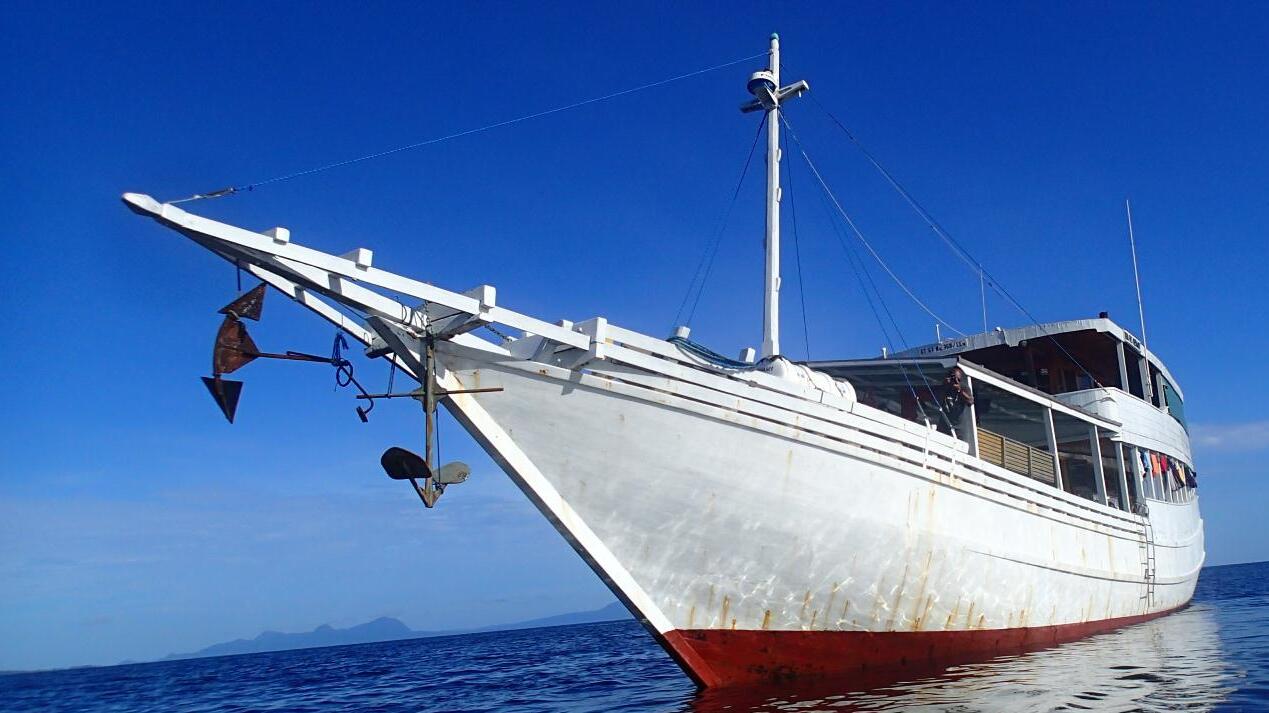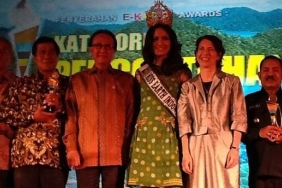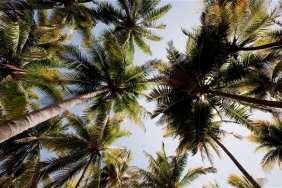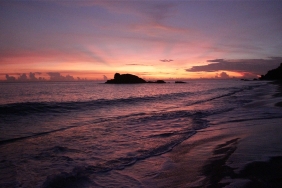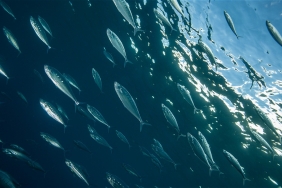NIGHTLIFE IN MENAMI
By: Nisa Syahidah (WWF-Indonesia)
What happens every day after the researchers return to Menami?
Usually, in the afternoon Menami comes alive again because all team members have returned. Usually, Om Rais (University of Muhammadiyah Kendari) and Pak Putu (Wakatobi National Park Center) will make jokes that make us forget that we have been sailing for more than a week.
Usually, too, if not bored, some will stand on the upper deck to enjoy the sun that is almost gone. If there is a signal, some seem to mojok to talk to their loved ones on the mainland.
On top of these things, there is one thing that everyone is always doing: inputting data.
Every day, both the land team and the sea team have to recap their observations in excel tables.
Benthic observers should write down the coral growth forms they encounter every 0.5 meters, for 150 meters. Rugosity observers should analyze the complexity of coral structures.
Large fish and small fish observers should write down the species and estimated size of fish encountered along a 5 x 50 m transect, plus a 15 minute long swim or about 300 meters. They also need to photograph the notes they take underwater, just in case. Likewise, the land team recaps the results of interviews with fishermen.
There were three types of whistles we were familiar with during the expedition. A one-time whistle, when it's time to get off the Menami for data collection. The second whistle, which was always anticipated, was feeding time. Taufik (WWF-Indonesia) used to sound the whistle three times every night at eight o'clock. This signaled the deadline for data collection to Riri (WWF-Indonesia), as well as the time to gather in the briefing room. All the daily findings of each team were reported, and the next day's research plan was announced.
Sometimes, the divers get a bonus cheer when they find a transect with a sand substrate - that's a lot of data. Saddest of all, if they tell me that night while diving they heard the boom of a fish bomb. Finding dead coral, or blooming Crown-of-Thorns Starfish (COTS) that prey on coral.
So, the nightlife at Menami was indeed characterized by stories of each research team's findings. With their excitement to dive again the next day. With yawns in their mouths, but hands still working to input data.
Menami's nightlife is sometimes accompanied by the sound of music from the speaker in the briefing room, sometimes by strong winds and rain, sometimes by the sound of waves crashing softly. Sometimes it's a 3G signal, but mostly it's Edge. But what was always there was their enthusiasm for inputting data.
That night, I fell asleep while listening to Mrs. Rahma (FPIK UHO) and Yusran (Yayasan Bahari) correcting the data while spelling out initial after initial of the coral growth form categories at their dive point today. "ACB, ACD, CS, CF, SC, CM, ..."

